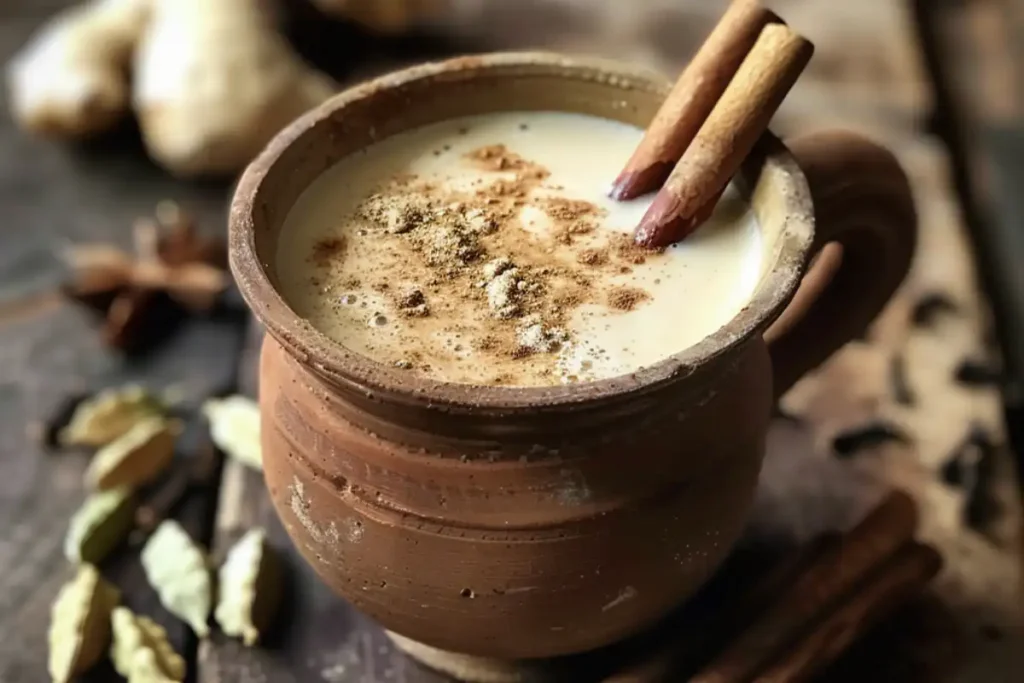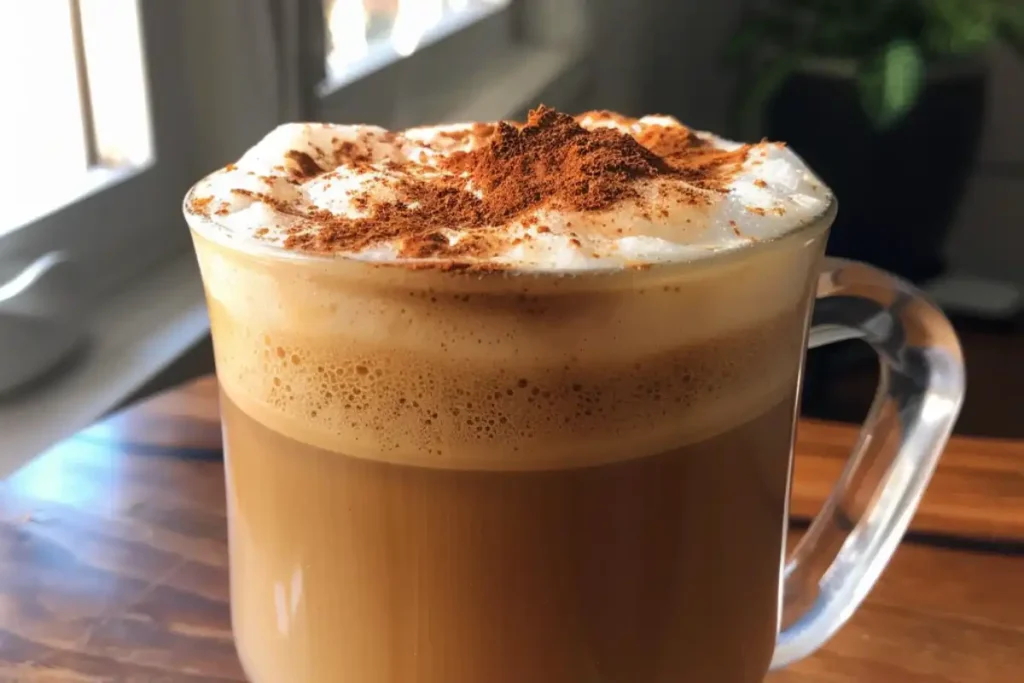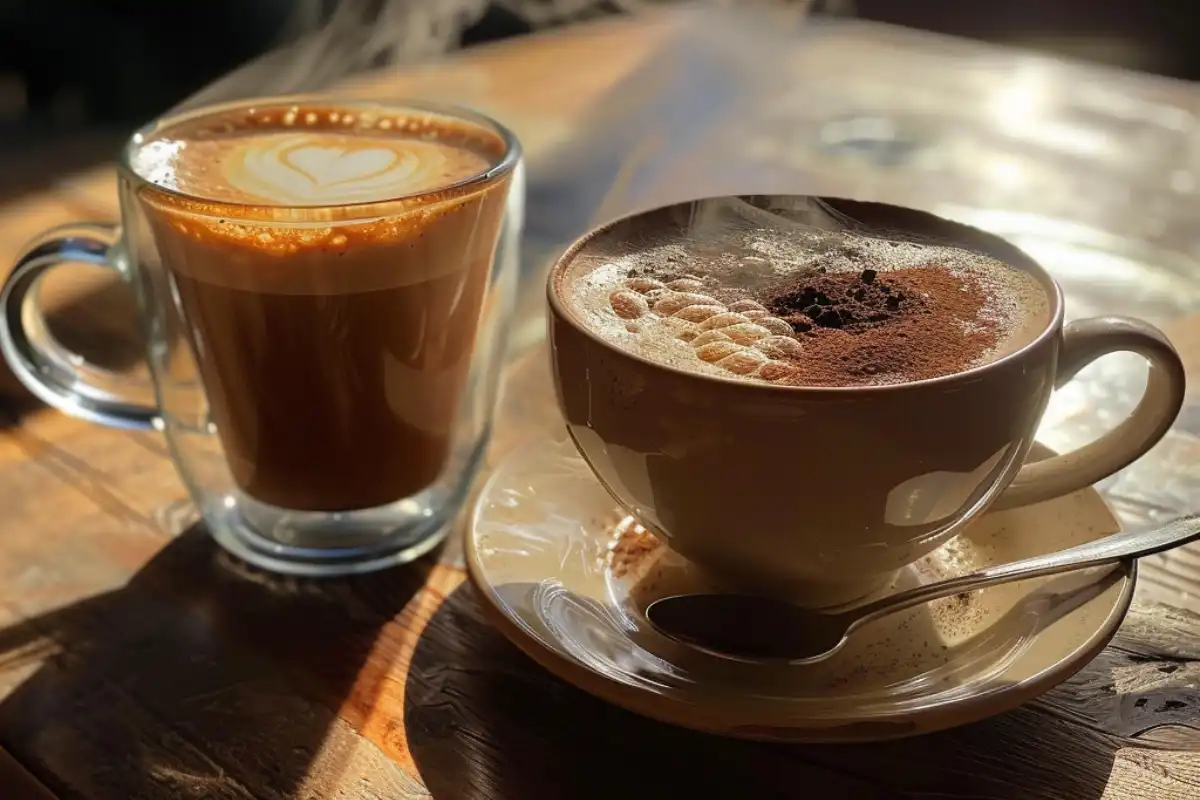Chai, a beloved beverage known for its warmth and fragrant spices, has taken on many forms over the years. Among the most popular variations are spicy chai and dirty chai. Both offer a rich and flavorful experience, but they cater to different tastes and preferences. While they share a common base, these two drinks differ in their ingredients, preparation methods, and overall flavor profiles.
In this article, we’ll dive deep into what sets dirty chai and spicy chai apart, explore their origins, and offer tips for making them at home. By the end of this guide, you’ll have a complete understanding of how these two chai variations differ and how to choose the right one for you.
Introduction to Chai: A Global Favorite
Chai, which means “tea” in Hindi, has its roots in India and has been a part of Indian culture for centuries. Traditionally, chai was made by brewing black tea with a combination of aromatic spices, milk, and a sweetener like sugar or jaggery. This spiced tea, known as masala chai, has spread across the world and evolved into various forms.
The rise of coffee culture, especially in Western countries, led to the creation of dirty chai, a blend of chai tea and coffee. This hybrid drink satisfies both tea and coffee lovers by combining the spices of chai with the bold kick of espresso.
To learn more about the roots and types of chai, check out this guide on chai variations, which explores different regional and modern adaptations of the beloved beverage.
What is Spicy Chai?
Spicy chai, often referred to as masala chai, is the traditional version of chai that originated in India. It’s a combination of brewed black tea and a blend of warming spices like cinnamon, cardamom, ginger, and cloves. The tea is simmered with milk and sweetened with sugar or jaggery to balance out the bold flavors of the spices.
Key Ingredients :
- Black tea: Acts as the base of the drink, providing a robust flavor.
- Spices: Common spices include cinnamon, cardamom, ginger, cloves, and black pepper. These create the signature warmth and aroma of the drink.
- Milk: Often whole milk is used to create a rich, creamy texture, but plant-based alternatives like almond milk or oat milk work well too.
- Sweetener: Traditionally, jaggery is used, but white or brown sugar is also common. Honey and maple syrup are modern variations.
Spicy chai is often enjoyed hot, and it’s known for its soothing and aromatic qualities. It’s especially popular during colder months or as an afternoon pick-me-up. If you want to explore making your own masala chai, check out this guide on how to make spicy chai for a detailed recipe.
What is Dirty Chai?
Dirty chai is a more recent invention that has become incredibly popular, especially in Western coffee shops. It’s made by adding a shot (or two) of espresso to traditional chai tea. The combination of tea and coffee creates a drink that’s both bold and spicy, with a higher caffeine content than regular chai.
Key Ingredients :
- Espresso: The defining ingredient that sets dirty chai apart from its spicier sibling. One or two shots of espresso are added to the chai base.
- Chai base: This includes the same blend of black tea and spices used in spicy chai.
- Milk: The milk in dirty chai helps balance out the bitterness of the espresso, creating a smooth and creamy texture.
- Sweetener: Sugar or honey is typically added to balance the flavors, though some people prefer it unsweetened.
Dirty chai appeals to coffee lovers who enjoy the spiced flavors of chai but want the boldness and energy boost of coffee. It’s often available in latte form, which adds steamed milk and froth for a creamier texture.
Comparison of Ingredients
The primary difference between dirty chai and spicy chai lies in the addition of espresso to the former. Let’s break down the ingredients of each:
- Spicy Chai:
- Black tea (typically Assam or Darjeeling)
- Spices (such as cinnamon, cardamom, ginger, cloves, and black pepper)
- Milk (whole milk or plant-based alternatives)
- Sweetener (sugar, jaggery, or honey)
- Dirty Chai:
- Espresso (1-2 shots, depending on preference)
- Black tea (same as spicy chai)
- Spices (same blend as spicy chai)
- Milk (whole milk or plant-based options)
- Sweetener (sugar or honey)
The addition of espresso in dirty chai not only intensifies the flavor but also increases the caffeine content, making it a much stronger drink compared to traditional spicy chai.
Flavor Profiles of Dirty Chai and Spicy Chai
The flavor profiles of these two drinks differ significantly due to the inclusion of espresso in dirty chai.
Spicy Chai Flavor Profile
Spicy chai is known for its rich, warming spices and smooth, balanced flavor. The blend of cinnamon, cardamom, and ginger creates a comforting and aromatic drink that is perfect for relaxing. The tea itself provides a bold base, while the milk adds a creamy texture that rounds out the spices.

Dirty Chai Flavor Profile
Dirty chai, by contrast, has a much stronger and more intense flavor due to the espresso. The coffee adds a bitter richness that contrasts with the sweetness and spiciness of the chai. This drink is perfect for coffee lovers who want to enjoy the warming flavors of chai with an added caffeine kick.
For those who enjoy both coffee and tea, dirty chai offers the best of both worlds, providing the boldness of espresso and the spice and warmth of chai.
Caffeine Content:
One of the most notable differences between dirty chai and spicy chai is the caffeine content.
- Spicy Chai: The caffeine in spicy chai comes from the black tea, which contains about 40-50 mg of caffeine per cup. This is comparable to a regular cup of tea, making spicy chai a moderately caffeinated beverage.
- Dirty Chai: Dirty chai contains both black tea and espresso, which significantly increases the caffeine content. A single shot of espresso adds about 63 mg of caffeine, and two shots can bring that up to over 120 mg, making dirty chai a much stronger option for those needing an extra energy boost.
For those looking to enjoy the flavors of chai without too much caffeine, spicy chai is the better option. However, if you’re in need of a strong pick-me-up, dirty chai delivers.
How to Prepare Dirty Chai and Spicy Chai
Spicy Chai Preparation
To make traditional spicy chai, the process involves boiling black tea with spices such as cinnamon, cardamom, and ginger. The tea is simmered with milk and sweetened with sugar or jaggery to balance the bold flavors. Once everything is well blended, the mixture is strained and served hot.
For those interested in more details, you can explore this step-by-step guide on how to make spicy chai at home.
Dirty Chai Preparation
Making dirty chai follows a similar process to spicy chai, with the key difference being the addition of espresso. After brewing the chai base with black tea and spices, you add one or two shots of espresso, depending on how strong you want the drink. Many cafés also offer dirty chai in latte form, where the drink is topped with frothy steamed milk.
If you prefer your chai iced, both spicy chai and dirty chai can be enjoyed over ice, creating a refreshing version of the classic hot beverage.
Regional Variations of Spicy Chai and Dirty Chai
Kashmiri Chai
Kashmiri chai, also known as noon chai, is a unique variation made with green tea instead of black tea. It is typically flavored with cardamom, cinnamon, and saffron, and has a pinkish hue due to the addition of baking soda. This chai is often enjoyed with crushed almonds or pistachios.
Mumbai Cutting Chai
Cutting chai is a stronger, spicier version of chai that is popular on the streets of Mumbai. It is served in small glasses, where the high concentration of tea leaves and spices creates an intense flavor.
Dirty Chai Variations
Dirty chai is primarily a Western creation, but it has been adapted into various café styles, including dirty chai lattes and iced dirty chai. These variations often feature steamed milk, flavored syrups like vanilla, or alternative milks such as oat milk or almond milk.
For more on how regional and modern twists on chai have evolved, check out this article on global chai variations.
Dirty Chai Lattes and Spicy Chai Lattes
Both dirty chai and spicy chai can be adapted into lattes, which are creamier and often sweeter than their traditional counterparts.
Dirty Chai Latte
A dirty chai latte blends the spiced chai base with one or two shots of espresso and steamed milk. The milk adds a rich, creamy texture, while the espresso creates a bold, energizing drink. Dirty chai lattes are often served with flavored syrups like vanilla or hazelnut for added sweetness.

Spicy Chai Latte
A spicy chai latte is similar to a regular chai, but with more milk and steamed froth on top. It tends to be less spicy and more indulgent, catering to those who prefer a sweeter and creamier drink.
Both lattes can be served hot or iced, depending on preference, and are perfect for those who want to enjoy chai in a more luxurious form. If you’re curious about how to perfect your chai latte, check out this recipe for chai lattes.
FAQs on Dirty Chai and Spicy Chai
1. What is the difference between dirty chai and spicy chai?
- The main difference between dirty chai and spicy chai is the addition of espresso in dirty chai. This adds a bold coffee flavor and increases the caffeine content, making dirty chai a stronger drink compared to traditional spicy chai.
2. Can I make dirty chai at home?
- Yes! To make dirty chai at home, brew a traditional chai base using black tea and spices, and then add a shot of espresso. You can also experiment with milk alternatives and flavored syrups to create your perfect cup. For a detailed recipe, see how to make dirty chai at home.
3. How much caffeine is in a dirty chai vs. a spicy chai?
- Dirty chai contains more caffeine due to the addition of espresso. A single shot of espresso adds about 63 mg of caffeine, so dirty chai can have significantly more caffeine than spicy chai, which only contains caffeine from the black tea base.
4. What are the common spices used in masala chai?
- The most common spices used in masala chai include cinnamon, cardamom, ginger, cloves, and black pepper. These spices create the warm and aromatic flavor that makes chai so popular.
5. What milk alternatives work best for dirty chai and spicy chai?
- Common milk alternatives that pair well with chai include almond milk, oat milk, and coconut milk. These options provide a creamy texture while complementing the spiced flavors of chai.
Conclusion: Choosing Between Dirty Chai and Spicy Chai
Both dirty chai and spicy chai offer unique and flavorful experiences, but they cater to different tastes. Dirty chai adds a bold coffee kick, making it ideal for those who enjoy the energizing effects of espresso alongside the warming spices of chai. Spicy chai, on the other hand, remains a classic choice for tea lovers who prefer a balanced, soothing drink.
Whether you prefer the rich intensity of dirty chai or the comforting flavors of spicy chai, both drinks offer versatility in how they’re enjoyed. Try experimenting with different spices, milk alternatives, and preparation methods to find your perfect cup.
For more recipes and chai-related content, check out our guide on high-protein mac and cheese for another delicious twist on traditional comfort foods.

